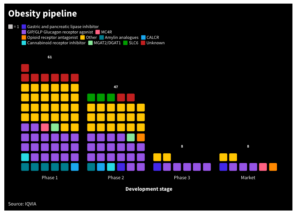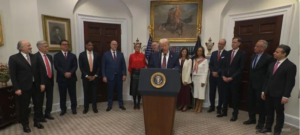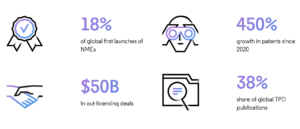The future of agrochemistry
One of the world's largest and most controversial mergers in the past few years was sealed in early June. German pharma and chemistry company Bayer has taken over US competitor Monsanto, forming the largest integrated provider of seeds, agrochemicals and digital farming solutions on the planet. The acquisition is part of a recent US$170bn deal binge that is already having a profound impact on the future of global agriculture.
The completion of Bayer’s US$62.5bn (€51.6bn) acquisition of Monsanto on June 7, 2018 marks the end of a process of power concentration unlike that in any other industry in decades. The wave of mergers in the agrochemicals and seeds industry over the past three years has changed the face of the entire sector in that short period of time. The top three slots are now held by a European, a Chinese, and a US multinational. In the top spot in terms of revenue is German-based Bayer AG, previously third in terms of sales. The name of the company generations of environmentalists loved to hate – Monsanto – will be resigned to the dustbin of history after the American giant’s operations are integrated into Bayer’s crop science business.
Chinese-owned but largely Swiss-based Syngenta is a strong number two, after it was acquired by the state-owned giant Chemchina. And the new DowDuPont combination clearly moves up into position three. Complementing the Big Six now turned Big Four is German chemistry company BASF, which has been a big beneficiary of the windfall assets Bayer had to divest to get the merger with Monsanto done.
The shakeup has brought an even greater concentration of power in these four industry leaders. The oligopoly that dominates the market now carries a very large club indeed in the sector. So it comes as no surprise that competition authorities examined the individual mergers very closely, and demanded extensive divestitures. Along with BASF, smaller competitors like FMC (US) and Nufarm (Australia) have so far also been able to strengthen their businesses with assets from the merging companies.
No scarcity of scepticism
Despite those divestitures, farmers don’t appear to be satisfied by antitrust authority measures. Before the giant merger, Bayer was the second largest supplier of pesticides worldwide, and a big seed company as well. Monsanto was the planet’s largest seed supplier, and one of the biggest sellers of its most frequently used pesticide – glyphosate. A survey among 1,000 full-time US farmers organised in early 2018 by a coalition of farm groups revealed widespread scepticism about the merger. Over 90% expressed concern about the transaction. Among the top fears respondents shared were higher seed prices, less innovation and fewer seed varieties. And those fears are justified, argue Allen Grunes and Maurice Stucke, antitrust attorneys from The Konkurrenz Group (US). In a white paper on the competitive problems of the transaction between Bayer and Monsanto, they explain that US farmers – who unlike their European counterparts that are protected from seed price hikes by the European Commission – will see incomes shrink when seed prices rise. In terms of innovation, the merger will also have a bigger impact on the US than on Europe. Bayer and Monsanto are among just a handful of companies working on genetically modified (GM) crops. Less competition is not to be expected in Europe, as few GM crops are grown there. But in the US they make up a much bigger piece of the pie. The merger will reduce the pressure to innovate in the GM crop space dramatically, Grunes and Stucke believe.
While the market for seeds and crop protection sounds straightforward enough, it isn’t really. Farmers all over the world will of course continue to buy soy, wheat or canola, plant their fields, and purchase chemicals to protect those crops from insects, fungi or weeds. But difficult-to-predict weather conditions have made for a surprisingly volatile market that’s been mired in a cyclical downturn since 2012. The companies are left hoping the market will stop falling this year or next.
Bespoke crop protection
Generally, the business the Big Four will chase can be split into two fields: crop protection and seeds. The former has strong roots in chemistry, the latter in biology. In crop protection – which includes anything from treating seeds to fully grown plants – the seed treatment market is showing strong growth. According to a report released in May by Grand View Research, the sector will swell 9.6% annually until 2020, eventually reaching a size of US$5.6bn. Broad-spectrum chemicals, on the other hand, are under heavy pressure due to environmental and (real or perceived) health issues. The trend is now toward focal application of chemicals to seeds and – with the help of digital tools – only the affected parts of the field. Another trend is biological solutions for containing disease, strengthening crops and fighting pests. Most biological crop protection products available today are either beneficial microorganisms or pheromones, but research into bacteriophages, bacterial lysins, enyzmes and even antibodies is on the rise (see European Biotechnology Winter Issue, 2016).
At stake – the power to innovate
In the seeds space, innovation is expected to be driven by genome editing technologies. CRISPR/Cas9, TALENs and other tools are giving seed developers new options when it comes to optimising traits like yield, resistance to environmental stress, diseases or pests (see European Biotechnology Summer Issue, 2017). To keep the pressure to innovate high in a post-merger era, the European Commission is forcing Bayer to divest its seeds business, including its soy, canola, cotton and vegetable assets. Bayer will sell them – as well as some crop protection agents and the digital farming platform Xarvio – to BASF. The deal is expected to close this summer, right before the Bayer-Monsanto merger. For the sale of those assets, which have a combined annual revenue of more than €2.2bn, Bayer will receive €7.6bn. For experts Grunes and Stucke, that transaction is highly problematic. In the last few years, BASF has cut back its own bioscience efforts because of what the company calls extremely high technical challenges’, they write. For them it seems highly unlikely that BASF will be transformed into a more dynamic and innovative company by taking over Bayer’s divested units and technology. Ultimately, Grunes and Stucke expect a loss of innovation in the seed sector. Their final verdict on the US Justice Department’s decision to allow the merger? A mistake.
Markus Heldt, President of BASF’s Crop Protection division, obviously has a different opinion. With our expanded portfolio across seeds and traits, chemical and biological crop protection, soil and plant health, and digital farming applications, he says, we will have even more tools to support farmers.
Competitor One: ChemChina
Kicking off the jumbo mergers in the industry over the past 18 months was China’s largest chemistry company China National Chemical Corp. (ChemChina), which acquired Switzerland’s Syngenta in early 2017. The state-owned company paid US$43bn (CHF43.7bn) in cash for the privilege, making it the biggest acquisition of a foreign company by a Chinese company in history. Not long before, ChemChina had bought out the world’s then 7th biggest agrochemistry company Adama (Israel). The Syngenta deal was not only important to the Chinese giant because it will strengthen ChemChina’s chemistry business, but also strategically, as Syngenta has a strong seeds business with a potent R&D arm.
A recent report by The Wall Street Journal underlined China’s ambition, mentioning that Syngenta is modernising its biotech centre in Beijing, where plants and animals will be tweaked using modern genome editing technologies. Investments are in the seven-figure range, and 50 staff have begun working there so far – mainly on genome-edited plants. It appears that China skips the classic GMO age altogether as the country has yet to approve a foreign-developed GM crop for cultivation in the country.
Competitor Two: DowDuPont
A couple of months after the ChemChina purchase, Dow Chemical Company and DuPont (both US) completed their merger of equals into DowDuPont Inc. Before long, an agriculture division within the company was formed by integrating Dow Agrosciences, DuPont Pioneer and DuPont Crop Protection into what is now called Corteva Agriscience. The merger required the divestiture of various crop-protection and seed portfolio elements to garner approval from US and foreign regulators. US company FMC Agricultural Solutions agreed to buy the bulk of the chemistry assets.
After the formation of DowDuPont, the process of splitting the company into three separate businesses was initiated. Recent updates from the merged giant on the timing and sequence of separating the three divisions into stand-alone, publicly traded companies expect the Materials Science division (Dow) to split off by the end of Q1/2019, and Agriculture (Corteva Agriscience) and Specialty Products (Dupont) divisions to split off by June 1, 2019. With a focus on seed and crop protection, some analysts believe Corteva Agriscience could be a good fit with BASF.
Competitors Three & Four
FMC is a pure-play chemistry company. 96% of its products are synthetic pesticides. In 2017, it acquired DuPont’s global chewing-pest insecticide portfolio, its global cereal broadleaf herbicides, and a substantial portion of DuPont’s global crop-protection R&D capabilities. All together, they had a fair value of US$3.6bn. That helped make FMC the global number five in the agrochemistry and seeds business. Responding to worldwide demand for more specific, biological crop protection solutions, FMC has intensified efforts to broaden its scope by partnering with Danish biotech heavyweight Chr. Hansen in early June 2018. Chr. Hansen owns a collection of 30,000 microbial strains used in the food, pharmaceutical and agricultural industries. While the two companies say their existing mutual development pipeline will continue to be exclusive for the next five years, the agreement allows both to pursue new relationships with other partners if they wish. The two have launched several biobased products in the past, including the nematicides Quartzo and Presence.
Australian company Nufarm Ltd. was also able to grow business by acquiring competitor assets during the last couple of months of shakeups. For instance, it snapped up over 50 crop protection formulations for US$490m from Adama when owner ChemChina bought Syngenta. It has also purchased herbicides from FMC for US$85m. While Nufarm’s seed segment is tiny (5%) in comparison to its crop protection segment (95%), it’s seeing strong growth. The company has a lot of hope for an 3 canola programme that has already been greenlighted by regulatory authorities in Australia and New Zealand. The unique canola strain stably produces between 10% and 12% long-chain 3 fatty acids, with the majority as DHA (docosahexaenoic acid). The novel crop could go a long way toward making the production of fish oil from wild-caught fish obsolete. With selected genes from microalgae, the GM crop was developed together with Australian multi-site CSIRO, the Commonwealth Scientific and Industrial Research Organisation. Nufarm plans to sell the extracted oil to the aquaculture and food industries. By extracting the oil from plants instead of fish, it plans to move up the value chain. This will give us a competitive advantage over commodity seed players, said Brent Zacharias, Group Executive of Nufarm’s seed division Nuseed. Interestingly, Nufarm has clashed in the past with BASF over intellectual property, although the German company’s challenges to Nufarm and CSIRO patents remained unsuccessful.
Stampeding into the omega-3 fatty acid market
Many companies now view 3 fatty acids as a big business opportunity. BASF and US food company Cargill Inc. have been developing a genetically engineered 3 canola strain since 2009. The event LBFLFK 3 canola is genetically engineered to allow for the synthesis of long chain 3 polyunsaturated fatty acids – and for resistance to an imidazolinone herbicide. More specifically, the GM plant contains genes encoding seven fatty acid desaturases and three elongases originally isolated from organisms as diverse as oomycetes, green algae, diatoms, moss and flowering plants. They were introduced into a conventional canola variety by A. rhizogenes-mediated transformation. Besides Nufarm and BASF/Cargill, DowDuPont is also developing a 3 source from GM crops. Plant-based technologies are believed to be the most economical way to produce the valuable compound, but some companies are employing fermentation processes to reach the same goals – among them Dutch Corbion (taking over a former Bunge/Terravia project), US food giant Archer Daniels Midland, and Veramaris, a joint venture between Dutch Royal DSM and German Evonik Industries.
Digital impact behind the scenes
The consolidation of the industry could have a profound effect in light of a more general trend – digitalisation. The race between the Big Four will be to increase farmer dependence on their digital platforms, which will result in them relying more and more on integrated seed and crop protection solutions. There are a number of competing companies in this area, says Adrian Percy, Bayer Crop Science’s head of R&D. In a kind of Newton’s cradle effect, the digital services will change ownership in the wake of the merger. The biggest step was taken by Monsanto, which invested almost US$1bn in this area, Percy adds. In the US, Monsanto’s system Field View has been given positive reviews. In 2017, the company initially wanted to collect data from 25 million acres of land – and in the end managed to collect data from around 35 million. Now that Bayer owns the Field View system, it will sell its digital offering – Xarvio – to BASF. If and how BASF’s own digital platform Maglis will be combined with Xarvio has not been communicated.
The danger of a data monopoly is a real one. Monsanto set itself a goal in 2016 to build a centralised data platform for digital agriculture on which third parties can run specialised apps and services. Monsanto would then reap part of the revenue. Additionally, it could ban or penalise offers on the platform that relied on other crop protection agents than its own. Will Bayer, the platform’s new owner, try to establish a monopoly like those enjoyed by Facebook or Apple? R&D head Percy waves the thought aside. Because agriculture is so diverse, he says, the scope and number of such tools would be so wide that one platform couldn’t possibly host them all. But only time will tell if that assumption holds water. Or if the farmers with their fears about the mergers will be proven right after all.
(First published in European Biotechnology, Summer 2018 Edition)


 IQVIA
IQVIA White House
White House Clarivate
Clarivate